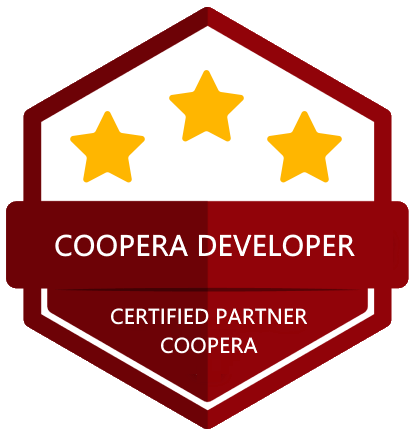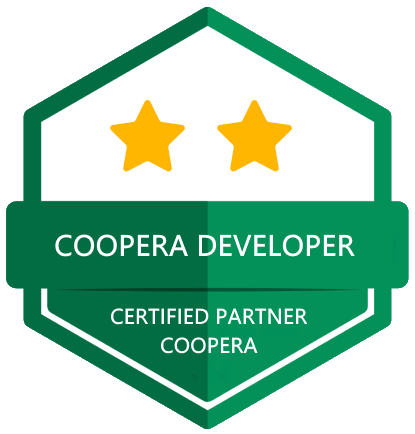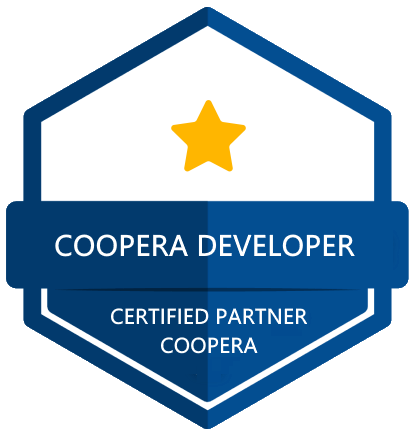per Partner e Professionisti IT
Pensati per i team IT, gli amministratori di sistema e i partner, questi percorsi di certificazione garantiscono alle organizzazioni la possibilità di configurare, gestire e scalare Coopera in modo autonomo. Le certificazioni convalidano le competenze tecniche nell'automazione dei processi, nell'orchestrazione dell'intelligenza artificiale e nelle integrazioni di sistema di Coopera.




In cosa si differenzia dalle piattaforme tradizionali di
?
Mentre le piattaforme tradizionali come BPM, BPA, RPA e Content Management si concentrano su aree specifiche come l'automazione dei processi o la gestione dei documenti, una piattaforma BOAT è trasversale e consente alle aziende di unificare tutte le esigenze operative senza creare silos tecnologici.
-
In cosa si differenzia dalla tradizionale gestione dei processi aziendali
BOAT vs BPM -
In cosa si differenzia dall'automazione robotica dei processi
BOAT vs RPA -
In cosa si differenzia dall'Enterprise Content Management tradizionale
BARCA vs ECM -
In cosa differisce dal Case Management
BOAT vs Case Management
BOAT
BPM
Objective
Unified orchestration of processes, data, automation, and AI
Modeling, execution, and monitoring of business processes
Scalability
Scalable for any volume of data and processes, integrated with AI and advanced automation
Scalable but often depends on other tools for AI integration and automation
Automation
Includes both workflow automation and RPA, AI, and content management
Focused only on workflow automation
Data Management
Native support for data-driven workflows, document management, AI, and advanced analytics
Requires other platforms to integrate documents and external data
Integration
Native connectivity with BPA, RPA, AI, and case management
Needs integration with other tools for advanced functionalities
BOAT
RPA
Objective
Combines automation with orchestration, document management, and AI
Automates repetitive, rule-based tasks
Scalability
Scales across various business functions with AI-driven automation
Limited to task-level automation, requires additional systems
Process Interaction
Manages complex workflows beyond simple UI interactions
Interacts with existing systems via screen scraping
Data Utilization
Integrates structured and unstructured data for intelligent automation
Mostly relies on structured data from predefined UI interactions
Adaptability
Flexible across dynamic business processes and evolving workflows
Works best with static, rule-based tasks that do not change frequently
BOAT
ECM
Objective
Integrates document management with AI, automation, and workflows
Focuses on document storage and retrieval
Process Management
AI-driven workflows for intelligent content handling
Mostly focused on document centric workflow with limited capabilities
Automation
Extracts metadata, recognizes documents, and automates workflows
Primarily used for storage, requiring external automation tools
AI Utilization
Uses AI for smart categorization and intelligent search
Limited AI capabilities, mostly search-based retrieval
Integration
Seamlessly integrates with BPM, RPA, BPA, and AI
Usually requires custom or predefined connectors
BOAT
CM
Objective
Integrates case management, process automation, and AI
Manages case-specific workflows only
Flexibility
Supports adaptive, structured, and unstructured workflows
Primarily structured with predefined steps of the case
AI Automation
Includes both workflow automation and RPA, AI, and content management
Focused only on workflow automation
Data Management
Uses AI for classification, analytics, and decision-making
Relies on manual decision-making
Integration
Seamlessly connects with BPM, RPA, AI, and ECM
Limited integration with external systems trough predefined connectors
Inizia subito
Sei pronto a Supercharge
la tua organizzazione?
Aumenta le vendite e resta in testa al mercato competitivo essendo tra i primi a beneficiarne.
